Detection in urine, increased number of white blood cells is called leukocyturia. For the diagnosis of the disease is necessary to determine the source.
Moderate pyuria in children grudnichkovye age accompanies the period of teething, and is caused by reaction of the gums.
High index always speaks for marked inflammation.
In the development of pathology can participate:
- renal parenchyma;
- pelvis and calyx;
- the mucosa of the ureters;
- bladder;
- urethral channel;
- adjacent to the urethra of the male sexual organs (prostate gland and seminal vesicles).
How is the count?
In appearance of urine can be assumed leukocyturia in the presence of turbidity, floc or fibers. Usually this is a sign of pyuria (pus), which also represents the white blood cells, but destroyed, melted together with the remnants of necrotic tissue.
An existing method of colour bands allows to identify the most leukocyturia quickly. The basis based on the biochemical reaction of the enzyme esterase, which is contained in granulocytic cells. The technique is suitable for mass preventive examinations of the population. But the exact figure it does not. All positive tests have to confirm quantify.
Special analyzers most modern devices, but not all laboratories can afford to purchase them. Therefore, the most common method is the counting of leukocytes in the camera Goryaeva.

Under the cover glass, divided into squares, put a drop of urine, it is treated with sufficient magnification and at the same time I think the manual leukocyte counting machine
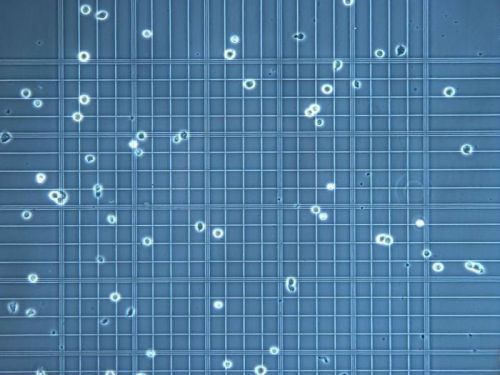
In the interpretation of possible the following conclusions:
- leukocytes in a single field of view;
- the exact number when leukocyturia;
- “leukocytes very often” or “occupy the entire field of view” with a significant number of cells.
The boundary of the leucocyturia and pyuria believe 60 cells in the field of view.
Other popular methods of calculation:
- Method Nechiporenko. It requires the calculation of the cells of the leukocytes in one millilitre urine at the same time with erythrocytes and cylinders.
- Sample Kakhovskogo – Addisa – ml of urine for analysis is taken from daily diuresis, it eliminates the possibility of variations during the day.
- Hamburge are more refined calculation takes into account the selection function, since the urine volume is allocated in one minute.
How to distinguish normal from pathological?
By definition of the normal boundaries of the number of white blood cells, there is no consensus.
Some researchers argue that normal should be considered:
- for girls up to 10 cells;
- for boys up to 6.
Others insist on bringing that figure to zero in a healthy person, but I admit:
- for boys 0-2;
- girls 0-3.
At a diathesis at the child leukocyturia can grow up to 5-7. The upper limit for women is – 8 in the field of view for men – 6 (according to other sources, respectively, 6 and 3).
The emergence of leukocyturia without pathology due to:
- the ability of a small number of cells to penetrate the vascular wall and enter into the urine;
- the presence of cells monitors the protection status of your body;
- toddlers have an increased capacity of the glomerular membrane due to functional immaturity.
Higher standards in girls and women are anatomical features. The outlet of the urethra of them lies close to the anus, so there is always a possibility of getting intestinal flora and require additional protection.
In the diagnosis can not be based on the absence of characteristic symptoms of diseases, because maybe latent period when the person feels completely healthy. The appearance of asymptomatic leukocyturia means that you need to prove the absence of pathological changes additional studies.
The mechanism of occurrence of leukocyturia
The pathogenesis of the following problems. Increased detection of leukocytes in urine is due to their leaching of active inflammatory lesions of the urinary tract. In response to the introduction of bacteria and other infectious agents in the affected area accumulate leukocyte cells. They are “trying” to fight foreign bodies by phagocytosis (“swallow” them and dissolve) or separation from spreading to adjacent areas of tissue.
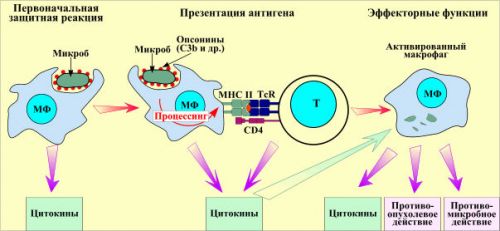
Schematically shows the process of phagocytosis and leukocyte transformation in the active macrophage, and now he has the ability to absorb the germs
In the analysis of urine are often detected bacteria (bacteriuria) – Escherichia coli.
For inflammation of the urinary organs the most characteristic:
- Proteus;
- staphylococci;
- streptococci;
- Klebsiella;
- Pseudomonas aeruginosa;
- tuberculous Mycobacterium;
- fungi of the genus Candida;
- viruses.
Each of the agents has its own “favorite” place of defeat and settles in the area from the urethra to the renal pelvis.
Types
Leukocyturia asked to share:
- true – when discovered cells appear in the urine directly from the urinary system;
- about the result of the contact of the external genital organs in the vulvovaginitis in women, balanoposthitis in men, disorders of the thoroughness of the implementation of hygiene requirements in the collection of urine for analysis.
In connection with the infecting agent:
- infectious – caused by the above pathogenic species;
- non-communicable – in the analysis no concomitant bacteriuria, consider urine such abacterial or sterile and aseptic inflammation.
The second option occurs during pregnancy, non-communicable diseases of the genitourinary tract (amyloidosis, autoimmune acute glomerulonephritis), difficulties with the identification of the pathogen in the case of viral, Mycoplasma, Ureaplasma, chlamydia, tuberculous lesions.
On the basis of the number of leukocytes can be distinguished:
- minor – if the field of view is detected 8-40 cells;
- moderate leukocytes to 100;
- expressed – if the cells cover the entire field of view, usually this is the pyuria.
Slight pyuria is detected:
- in chronic renal failure on the background of renal amyloidosis, glomerulosclerosis in diabetes mellitus, glomerulonephritis;
- the initial stage of acute glomerulonephritis;
- prolonged fever;
- nephrotic syndrome;
- allergic reactions;
- worm infestation in children;
- infection of the genitals;
- systemic diseases;
- treatment with Aspirin, antibiotics Ampicillin, Gentamicin, and Kanamycin;
- the iron supplementation.
Ulcers are capable of be localized in the parenchyma, pelvis, and portal area
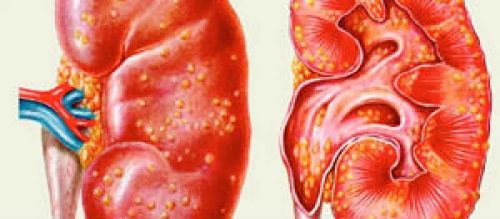
Severe leukocyturia (pyuria) are typical for the clinical course:
- hydronephrosis with suppuration;
- acute pyelonephritis aposematism form;
- abscess and carbuncle of the kidney.
The type of identified leukocyte abnormalities are distinguished:
- a monocyte or mononuclear – cells predominate among monocytes, found in cases of interstitial and glomerulonephritis;
- neutrophils – neutrophils usually account for up to 95% of the cellular composition, the lymphocytes – the other 5%, is characteristic of infectious lesions and the initial period of acute glomerulonephritis, exacerbation of chronic forms of the difference is less sharp;
- lymphocytic – detected in systemic diseases with renal impairment (rheumatoid arthritis, lupus erythematosus);
- eosinophilic cells indicate the nature of the allergic inflammation occurs on the background of abacterial glomerulonephritis and cystitis in pregnant women.
Reasons
Causes leukocyturia more often connected with the inflammatory process in the organs of the urinary tract. The cystitis often affects women.
In addition to the anatomical features of the urethra have more factors disturbing the blood circulation in the pelvis and the bladder wall:
- sedentary office work;
- pregnancy;
- prone to constipation;
- wearing compression underwear;
- menopause;
- lowered immunity;
- exposure to endocrine pathology.
Pyelonephritis begins with the renal pelvis. Infection of the kidney occurs by hematogenous (through the blood) of foci of chronic infection (carious teeth, sinusitis, chronic cholecystitis, adnexitis, prostatitis). Possible infiltration of the underlying paths in the upward direction and lymphokine.
Interstitial nephritis is the main process occurs in the parenchyma, is considered to be an autoimmune disease, the beginning can put a bacterial or viral infection. Combined with impaired immune system, toxic effects of drugs or chemicals.
Less frequently detected leukocyturia:
- when the prostate – the cause is the same infection, the fall of protective forces, hypothermia, a decrease in physical activity;
- renal tuberculosis – background primary pulmonary, urinary ways tuberculosis Mycobacterium tuberculosis enters the blood stream;
- urolithiasis.
Symptoms
Pyuria is rarely the only symptom of the disease.
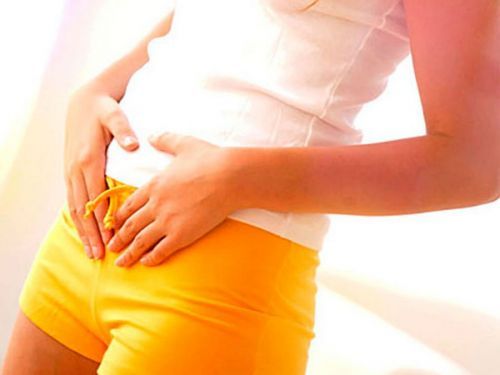
It can be assumed infection of the urinary system by the following symptoms:
- dysuric disorders (rapid or difficult urination);
- pain in the suprapubic area, with one hand in the small of the back;
- changes urine color and smell;
- pain, cramps, burning sensation when urinating;
- the occurrence of fever.
Violation of urination is one symptom of the pathology
Urolithiasis to leukocyturia added:
- paroxysmal pain in the lower back radiating to the groin, the abdomen;
- more frequent urge to urinate;
- the allocation of small amounts of turbid urine;
- hematuria shear stone;
- nausea on a background of pain attack.
For manifestations of acute pyelonephritis, except leukocyturia, a typical high fever, intense back pain, cramps during urination, nausea, vomiting, aching joints.
In chronic pyelonephritis leukocyturia the severity of the control stage of exacerbation and remission. It can manifest itself:
- Piura;
- a dull intermittent pain in the lower back;
- increase of weakness;
- temporary signs of dysuria.
Contact with interstitial nephritis indicate:
- loss of appetite;
- pronounced pain;
- the appearance of edema;
- the increase of protein in the urine (proteinuria);
- anemia.
Diagnosis
For differential diagnosis of leucocyturia you want to apply for more research to establish the source of inflammation. There are practical tests to identify the level of pathology. Method dvuhtonnoy sample – continuous urination urine is collected in 2 containers.
Evaluation of results:
- leucocyturia in the first portion identifies the source of inflammation in the urethra or prostate in men;
- the white blood cells in the second portion say for the defeat of the upper urinary organs.
Method trehstakannoy a sample of urine is collected in three tanks.
Rating:
- the maximum number of cells in the initial portion indicates a lesion of the urethra;
- if the same distribution in all portions of the symptom of renal disease;
- the predominance of 2-3 cups says about the disease of the bladder.
To identify concealed leukocyturia is necessary to conduct a prednisolone trial: intravenous administration of Prednisolone and examined the urine every hour. If chronic kidney disease is accompanied by hidden symptoms, the number of leukocytes is increased in 2 times.
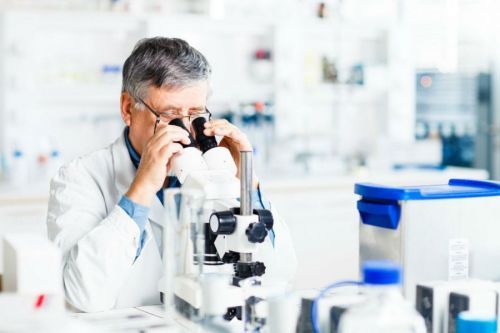
In laboratory diagnosis helps to establish the origin of leukocytes in the urine qualitative assessment of cells
Cells Shterngeymera-Malbina, identified by a special color of pale blue large formations (2-3 times bigger than normal white blood cells). Inside find many pellets are in constant motion. Found half of the patients with acute pyelonephritis and ¼ with chronic. Can get into the urine from prostate and vaginal secretions. Diagnostically it is important that they are absent in cystitis.
“Active” referred to the white blood cells detected in acute pyelonephritis. If the urine, to the residue add distilled water, there will be an artificial decrease of the osmotic pressure. This creates conditions for increasing the permeability of the cell membranes of these cells. Enters inside the liquid, so the size increase, increases the internal mobility of the granules.
For pathology use:
- palpation of the prostate in men, uterus and genital organs in women with PAP smears for bacterial analysis;
- the blood protein, nitrogenous substances, electrolytes;
- ureterorenoscopy;
- ultrasound of the kidneys and bladder for men is recommended in the presence of palpation revealed a growth of the prostate transrectal examination;
- pyelography intravenously or via catheterization of the bladder;
- magnetic resonance or computed tomography if necessary.
Treatment
Therapy is not leukocyturia, and identified the disease. The goal of treatment is to remove the source of inflammation or during the chronic to achieve a more sustained remission.

The patient is required to appoint the necessary diet and drinking regime to prevent the admission of irritating substances and to flush out the infection
As an anti-inflammatory therapy antibiotics with the least toxic effect on the kidneys. They are prescribed after determining the sensitivity of the method tank analysis or use tools from a wide spectrum.
For treatment of pregnant I try to take herbal remedies. Of antibiotics perhaps the use of cephalosporins. They are the least harmful to the fetus. Often urologists recommend local procedure of washing the bladder with antiseptic solutions. For patients with nephritis treatment is based, depending on the shape. Appointed antihistamines, cytotoxic agents in combination with hormonal products.
Treatment of diseases accompanied by leukocyturia, requires patience and the implementation of the recommendations of the doctor. It is impossible to independently apply untested advertised funds, because of the kidney health depends on the state of other organs and systems of the body.


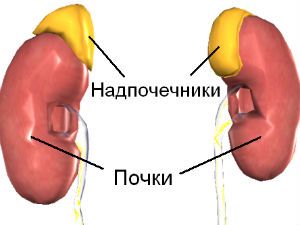

Thanks for your article. It is very unfortunate that over the last decade, the travel industry has already been able to to fight terrorism, SARS, tsunamis, flu virus, swine flu, as well as the first ever entire global recession. Through it the industry has really proven to be effective, resilient as well as dynamic, discovering new ways to deal with difficulty. There are constantly fresh challenges and opportunities to which the business must just as before adapt and answer.
I loved as much as you will receive carried out right here. The sketch is attractive, your authored material stylish.
nonetheless, you command get bought an nervousness over that you wish be delivering the following. unwell unquestionably come more formerly again as exactly the same nearly very often inside case you shield this increase.